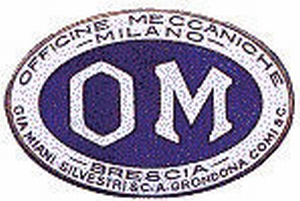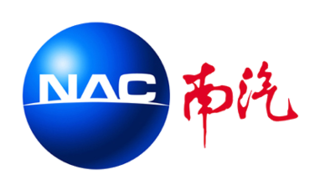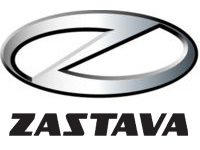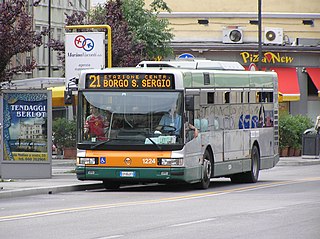Iveco S.p.A., an acronym for Industrial Vehicles Corporation, is an Italian multinational transport vehicle manufacturing company with headquarters in Turin, Italy. It designs and builds light, medium, and heavy commercial vehicles. The name IVECO first appeared in 1975 after a merger of Italian, French, and German brands. Its production plants are in Europe, China, Russia, Australia and Latin America and it has about 5,000 sales and service outlets in over 160 countries. The worldwide output of the company amounts to around 150,000 commercial vehicles with a turnover of about €10 billion.

Lancia Automobiles S.p.A. is an Italian car manufacturer and a subsidiary of Stellantis Europe, which is the European subsidiary of Stellantis. The present legal entity of Lancia was formed in January 2007 when its corporate parent reorganised its businesses, but its history is traced back to Lancia & C., a manufacturing concern founded in 1906 in Torino by Vincenzo Lancia (1881–1937) and Claudio Fogolin. It became part of Fiat in 1969.

Officine Meccaniche or OM was an Italian car and truck manufacturing company. It was founded in 1899 in Milan as Società Anonima Officine Meccaniche to manufacture railway rolling stock and car production began in 1918. It disappeared as such in 1975, subsumed into Iveco, but still exists as a forklift builder.

Pegaso was a Spanish manufacturer of trucks, buses, tractors, armored vehicles, and, for a while, to train apprentices, and have a good brand image, some sports cars. The parent company, Enasa, was created in 1946 and based in the old Hispano-Suiza factory, under the direction of the renowned automotive engineer Wifredo Ricart. In 1990, Iveco took over Enasa, and the Pegaso name became a secondary brand of Iveco.

Magirus GmbH is a truck manufacturer based in Ulm, Germany, founded by Conrad Dietrich Magirus (1824–1895). It was formerly known as Klöckner Humboldt Deutz AG, maker of the Deutz engines, so the brand commonly used was Magirus Deutz, and for a short time Klöckner. Most trucks from Magirus were also known as Magirus-Deutz. The logo of Magirus Deutz was a stylised M with a sharp, long centre point to represent the spire of Ulm Minster.

The Fiat Ducato is a light commercial vehicle jointly developed by FCA Italy and PSA Group, and mainly manufactured by Sevel, a joint venture between the two companies since 1981. It has also been sold as the Citroën C25, Peugeot J5, Alfa Romeo AR6 and Talbot Express and later as the Fiat Ducato, Citroën Jumper, and Peugeot Boxer, from 1994 onwards. It entered the North American market as the Ram ProMaster in May 2014 for the 2015 model year.

The Renault Master is a large van produced by the French manufacturer Renault since 1980, now in its third generation. It replaced the earlier Renault Super Goélette light trucks. Opel has sold versions of the second and third series vans as the Opel Movano in Continental Europe and Vauxhall Movano in the United Kingdom. All three generations have been designed and manufactured by Renault, irrespective of the brand. Renault Trucks markets it as the Renault Trucks Master.
Multijet is a Fiat and General Motors joint venture, established in 1996, in manufacturing diesel engines with turbo and common rail direct injection technology. Most of the Fiat S.p.A., Fiat Professional, Groupe PSA, Alfa Romeo, Maserati, Lancia, Chrysler, Chevrolet, Daewoo Motors, Cadillac, Karsan, Temsa, Iveco, Jeep, Opel, Vauxhall Motors, RAM Trucks, Mitsubishi Fuso, Maruti Suzuki, Suzuki, Tata Motors and Saab Automobile branded vehicles are equipped with Multijet engines. Ownership of some Fiat Multijet designs is shared with General Motors as part of a settlement of the failed merger between the two auto conglomerates. The GM Powertrain Torino group in Turin, Italy, manages its interest in these engines. Some PSA Peugeot Citroën diesel engines are also rebadged JTD units, and vice versa. Fiat's common-rail diesel engine is also known as JTD, an initialism of UniJet Turbo Diesel.

Nanjing Automobile is a state-owned enterprise with a history that dates from 1947, making it the oldest of the Chinese automobile manufacturers although the comparatively younger FAW Automotive was the first to make cars.

Iveco Bus is a bus manufacturer with headquarters in Turin. Iveco Bus is now only a brand division of IVECO which is a company incorporated under Dutch law and listed on Borsa Italiana.

ENASA was a Spanish motor vehicle manufacturing company that was incorporated in 1946 after having bought the automotive assets of the Spanish Hispano-Suiza and the Italian Fiat in Spain. It produced trucks, buses and military armored vehicles under the Pegaso and, for a short while, Sava brands. ENASA belonged to INI, a Spanish state-owned industrial holding company.

The Iveco Daily is a large light commercial van produced by the Italian automaker Iveco since 1978; it was also sold as the Fiat Daily by Fiat until 1983. Unlike the more car-like unibody Fiat Ducato, the Daily uses a separate ladder frame typical of heavier commercial vehicles. The Iveco Daily is produced at the Iveco Suzzara plant, near Mantova in Italy, where Iveco has recently made substantial investments to renew the production lines.

Santana Motor, S.A. was a Spanish motor vehicle manufacturer based in Linares, in the province of Jaén, Spain.

The Alfa Romeo Romeo is a light commercial, cabover van and pickup truck that was introduced by the Italian automaker Alfa Romeo in 1954 as the Alfa Romeo Autotutto. The line of vans continued to be built until 1983, when it was replaced by relabelled Fiat and Iveco commercials. In Spain, where this vehicle was also built, it was rebodied and kept in production into the early 2000s, first as an Ebro or Avia and finally as the Nissan Trade.
Astra Veicoli Industriali S.p.A. is an Italian company that produces trucks, heavy transport vehicles and military vehicles. Astra was privately founded in 1946 in Cagliari, and since 1986 has been part of Iveco. In 1951 Astra moved to Piacenza. From 1946 to 1986 Astra was owned by the Bertuzzi family of Piacenza. ASTRA is an Iveco Group brand.

Zastava Automobiles was a Serbian international car manufacturer, a subsidiary of Group Zastava Vehicles which went bankrupt in May 2017.

The Iveco Zeta is a light to medium-duty truck model produced by the Italian manufacturer Iveco. Appearing in 1976 and entering production in 1977, its cab was developed with the aid of Fiat's wind tunnel in Orbassano. The Zeta series continued the lineage begun with the 1959 introduction of the OM Lupetto. The Lupetto, as well as the Leoncino, the Daino, and the Tigrotto, were all replaced by the OM X-series in 1972, which then formed the basis for the Zeta range. The Zeta itself was replaced by the all-new Iveco Eurocargo in 1991.

The Iveco T-series is a medium to heavy-duty truck model produced by the Italian manufacturer Iveco, although it used the squared-off H-series cab originally introduced by Fiat in 1970. The truck was badged as an Iveco Fiat from 1975 and by 1980 the "Fiat" portion had been dropped entirely. A lighter duty range called the M-series was added in mid-1984, replacing the long defunct Fiat 130NC.
This is a list of Italian television related events from 1987.

The Iveco CityClass is an urban, suburban and peri-urban bus launched by the Iveco bus division in 1997 and renamed Irisbus in 2000. It is the equivalent of Agora in France. It succeeds the Iveco 490 TurboCity UR Green urban bus, later replaced by the Irisbus Citelis.